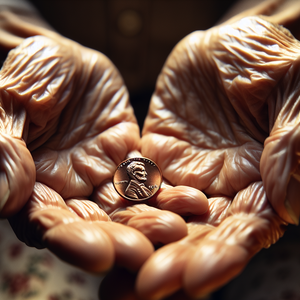The Human Touch in a Robotic World

The integration of automation and artificial intelligence into physical therapy presents an exciting opportunity to refine and enhance patient care. Robotic devices, such as exoskeletons, have emerged as game-changers for patients recovering from neurological conditions like strokes or spinal cord injuries. These machines assist with repetitive motion exercises, helping patients regain mobility while also reducing the physical strain on therapists. Similarly, wearable devices equipped with sensors can track a patient’s movement, posture, and recovery progress in real time, providing data that therapists can use to make evidence-based adjustments to treatment plans. AI-powered systems are also enhancing diagnostic accuracy. By analyzing large datasets of patient information, machine learning algorithms can identify subtle patterns in gait, range of motion, or muscle activation that even seasoned therapists might overlook. Virtual reality (VR) platforms, on the other hand, are being utilized for pain management and balance training, immersing patients in controlled, simulated environments that encourage them to push their physical limits in a safe and engaging way. These technologies are not just tools of convenience; they are expanding access to care in significant ways. For example, patients in rural or underserved areas can now participate in virtual therapy sessions or access AI-driven exercise programs tailored to their needs. For physical therapists, automation reduces repetitive tasks and administrative burdens, allowing them to dedicate more time to patient interaction. While the potential of these innovations is undeniable, they raise an important concern: as we increasingly rely on machines, are we in danger of losing the human essence of care—the empathy, intuition, and connection that are the hallmarks of healing?
The Role of Empathy in Recovery
Physical therapy is not just about repairing bodies; it is about restoring lives. Patients often arrive at therapy sessions feeling vulnerable, whether they’re grappling with pain, limited mobility, or the emotional toll of losing their independence. In such moments, the therapist’s role extends beyond physical intervention to encompass emotional support and encouragement. Empathy is the cornerstone of this relationship. A skilled therapist listens to their patient’s concerns, validates their frustrations, and adapts their approach to align with the patient’s goals and emotional state. For instance, a patient recovering from a traumatic injury may feel overwhelmed or discouraged by the slow pace of progress. In such cases, a therapist’s ability to offer reassurance, celebrate small victories, and motivate the patient to keep going can make all the difference. These subtle yet powerful interactions are deeply personal and impossible to replicate with machines. Technology, no matter how advanced, cannot offer a comforting smile or an understanding nod. A robotic device may guide a patient’s arm through a precise range of motion, but it cannot sense the hesitation of someone who is fearful of reinjury or provide a word of encouragement to ease their anxiety. The emotional connection between therapist and patient is an integral part of the healing process, and it cannot be programmed into an algorithm.
Intuition and Adaptability: The Therapist’s Edge
One of the most remarkable aspects of human interaction is its adaptability. Physical therapists often rely on intuition and experience to make real-time decisions based on a patient’s unique needs. They may notice subtle cues—such as a wince, a change in posture, or hesitation in speech—that indicate discomfort or fear. These observations allow therapists to adjust their approach dynamically, modifying exercises or offering reassurance to ensure that the patient feels supported and safe. For example, consider a patient recovering from a stroke. While a robotic arm can assist with repetitive movement exercises, it cannot account for the patient’s emotional state, fear of falling, or frustration with their progress. A therapist, on the other hand, can recognize these factors and adjust their methods to build trust and confidence. They might slow down the pace of a session, provide verbal encouragement, or even incorporate humor to ease the patient’s tension. This adaptability is a uniquely human trait—one that no machine, no matter how advanced, can replicate.
Technology as a Tool, Not a Replacement
Rather than viewing technology as a replacement for human therapists, it is more accurate—and productive—to see it as a tool that enhances their capabilities. AI and robotics can take over repetitive or time-consuming tasks, allowing therapists to focus on what they do best: building relationships, motivating patients, and tailoring care to individual needs. For example, AI systems can analyze a patient’s recovery data and flag potential issues, enabling therapists to intervene early and adjust treatment plans accordingly. Robotic devices can assist with labor-intensive tasks like gait training, giving therapists the freedom to focus on the emotional and psychological aspects of recovery. In this way, technology complements rather than competes with the therapist’s role. The key is balance. While automation can improve efficiency and accuracy, it should never overshadow the human touch that defines the profession. By integrating technology thoughtfully, physical therapists can deliver care that is both high-tech and deeply personal.
The Future of Physical Therapy: A Collaborative Approach
As we look ahead, the future of physical therapy lies in collaboration between humans and machines. Therapists will continue to play a central role in patient care, using technology as a partner to enhance outcomes. Education and training programs will need to evolve, equipping future therapists with the skills to operate advanced devices and interpret AI-generated data without losing sight of the human-centered nature of their work. Patients, too, will benefit from this collaborative approach. They will have access to cutting-edge tools that accelerate recovery while still receiving the empathy, encouragement, and personalized care that only a human therapist can provide. This vision of physical therapy is not about choosing between humans and machines; it is about leveraging the strengths of both to create a more effective and compassionate model of care.
The rapid rise of AI and automation in physical therapy is a testament to the incredible potential of technology to transform healthcare. From robotic rehabilitation devices to AI-driven diagnostics, these advancements are making care more efficient, precise, and accessible. Yet, as we embrace innovation, we must not lose sight of what makes physical therapy unique: the human touch. Empathy, intuition, and connection are the cornerstones of healing—qualities that no machine can replicate. By striking a balance between technological progress and human-centered care, we can ensure that the future of physical therapy is as compassionate as it is cutting-edge. In a robotic world, the human touch will always remain irreplaceable.
Rehabilitation Robotics Engineer
Med-tech companies like Ekso Bionics, ReWalk Robotics, and healthcare-focused R&D organizations
Job Responsibilities
Design and develop robotic exoskeletons and assistive devices to aid physical therapy patients in their recovery.
Collaborate with physical therapists and biomechanical experts to create devices that enhance mobility and support rehabilitation exercises.
Test and refine prototypes using patient feedback to ensure safety, usability, and effectiveness.
Unique Skills Needed
Expertise in biomechanics, robotics programming (e.g., ROS, Python), and human-centered design principles.
AI Specialist in Healthcare Diagnostics
AI healthcare startups (e.g., PathAI, Viz.ai), major tech firms venturing into healthcare (e.g., Google Health), or hospitals with in-house AI teams
Job Responsibilities
Develop and implement machine learning models to analyze patient data, such as gait patterns, muscle activation, or injury recovery trends.
Collaborate with clinicians to design AI systems that improve diagnostic precision and generate actionable insights for treatment planning.
Monitor and validate AI performance using real-world clinical data to ensure accuracy and reliability in diverse patient populations.
Unique Skills Needed
Strong background in computer vision, neural networks, and healthcare data compliance (e.g., HIPAA).
Virtual Reality Rehabilitation Specialist
Companies like MindMaze, XRHealth, and rehabilitation centers adopting VR technologies
Job Responsibilities
Design and implement VR-based therapy programs for patients recovering from neurological or musculoskeletal conditions.
Train therapists and patients to use VR platforms for pain management, balance training, or motor skill improvement.
Analyze patient outcomes and adapt VR environments to meet individual therapy goals.
Unique Skills Needed
Familiarity with VR software development (Unity, Unreal Engine), clinical knowledge of therapy protocols, and user experience (UX) design.
Digital Health Product Manager
Fitbit (Google), Apple (Health division), or digital health startups
Job Responsibilities
Oversee the development and launch of digital tools (e.g., wearable devices, mobile apps) for tracking and improving patient recovery progress.
Work closely with engineers, clinicians, and patients to ensure the product meets both technical and healthcare needs.
Analyze market trends and user feedback to refine product features and optimize adoption by healthcare providers.
Unique Skills Needed
Experience in healthcare product management, knowledge of FDA regulations for medical devices, and data visualization expertise.
Human-Centered AI Ethics Consultant
Think tanks, tech companies with healthcare divisions, or consulting firms specializing in AI ethics
Job Responsibilities
Develop ethical guidelines for integrating AI and robotics into fields like physical therapy, ensuring that innovations prioritize patient dignity and well-being.
Conduct impact assessments to evaluate how new technologies affect human connection in care delivery.
Collaborate with AI developers, medical professionals, and regulatory bodies to create transparent, patient-first AI systems.
Unique Skills Needed
Deep understanding of AI principles, healthcare ethics, and regulatory frameworks like GDPR and HIPAA.


